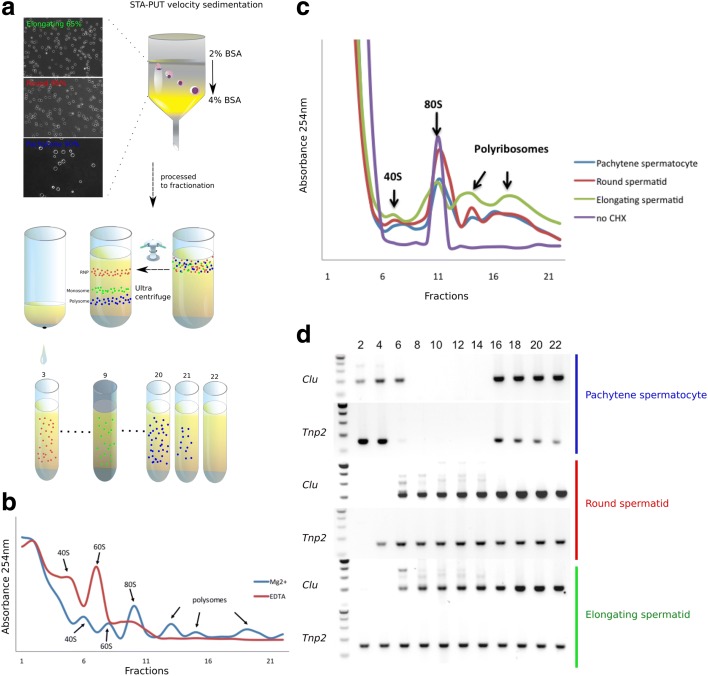Fig. 1.
Purification and fractionation of cytoplasmic contents and RNA isolation from pachytene spermatocytes, round spermatids, and elongating spermatids. a The STA-PUT method used for purification of pachytene spermatocytes, round spermatids, and elongating spermatids from adult mouse testes, and the sucrose gradient ultracentrifugation-based fractionation procedure for isolating RNAs enriched in ribonuclear particles (RNPs) and polysomes. The morphology and purity of the three types of spermatogenic cells isolated are shown in images at the top left. b RNA distribution in RNP (fractions 1–4), monosome (fractions 5–15), and polysome (fractions 16–22) fractions of total testis lysates. In the presence of EDTA, RNA and polysomes disassociate, leading to the disappearance of polysome peaks and an increase of monosome peaks. We collected the RNP and polysome fractions in this study. c RNA distribution in RNP (fractions 1–4), monosome (fractions 5–15), and polysome (fractions 16–22) fractions of purified pachytene spermatocytes and round and elongating spermatids. Please note that, in the absence of cycloheximide (CHX), in the buffer during cell purification, the polysome peaks disappeared. d Distribution of Tnp2 (a male germ cell-specific gene known to display delayed translation during spermiogenesis) and Clu (a ubiquitous gene known to be translated throughout spermatogenesis) among all the fractions collected from three spermatogenic cell types

